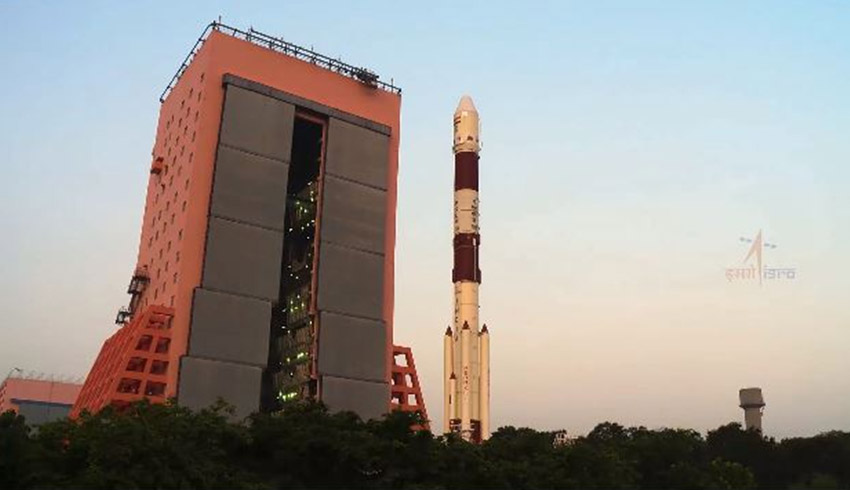At 56.24 minutes from launch on Monday, the countdown was halted and not long after, the Indian Space Research Organisation confirmed that the launch was off for the day.
“A technical snag was observed in launch vehicle system at T-56 minute. As a measure of abundant precaution, Chandrayaan-2 launch has been called off for today,” the agency tweeted.
It said a revised launch date would be announced later.
For India’s growing space program, Chandrayaan-2 is a very significant event. The aim is a soft landing on the moon, so far only achieved by Russia, the US and China.
For nations with emerging space programs, this is a particularly alluring achievement. Israel might have been the fourth, had its Beresheet lander not malfunctioned and crashed into the moon surface.
India is aiming for the little-explored southern polar region. Chandrayaan-2 is carrying the moon lander and rover, which will spend two weeks exploring the surface and collecting data on mineral and chemical composition and, hopefully, water.
Chandrayaan-2 follows Chandrayaan-1 in 2008 when an Indian probe successfully orbited the moon and launched an impactor that indicated the presence of water in lunar soil.
India sees its space program as a significant indicator of rising power status.
In March, India flexed its space muscles, conducting a successful test of an anti-satellite missile that obliterated an old Indian satellite in low-Earth orbit. That attracted strong criticism from NASA and other nations including Australia for further militarising space and contributing to the problem of orbiting space junk.
India isn’t the only nation having problems with its launches.
Last week a Vega rocket launched from the European spaceport in Kourou, French Guiana, deviated from its trajectory a few minutes after blast off.
It likely ended up in the Atlantic Ocean, along with its payload, a very expensive Falcon Eye-1 Earth observation satellite being launched for the United Arab Emirates military.
Just why the Vega rocket, which had previously achieved 14 successful launches, failed this time is now subject of an inquiry.
“The European Space Agency and Arianespace immediately decided to appoint an independent inquiry commission,” the European Space Agency and Arianespace said in a joint statement.
The Falcon Eye-1 satellite, built by Airbus Defence and Space with an imaging payload from Thales Alenia Space, was the first of two military reconnaissance satellites due to be launched for the UAE military this year.
This is essentially an upgraded version of the French Pleiades HR Earth observation satellites, capable of ground resolution of less than a metre.
The UAE was philosophical about this loss.
“The loss of UAE (Falcon Eye-1) satellite due to (Vega) rocket failure, reminds us that space is hard and challenging,” tweeted Dr Mohammed Al Ahbabi, director-general of the UAE Space Agency on Saturday night.
“But this is why the UAE has [an ambitious] space program. We will come back very soon with Falcon Eye-2 stronger than ever before.”

